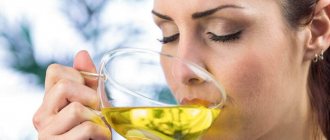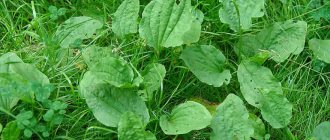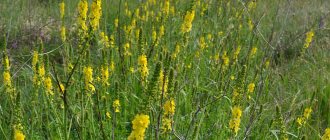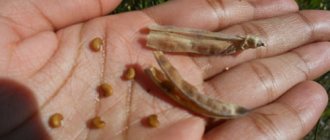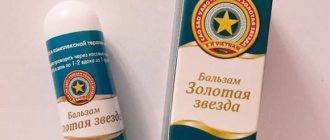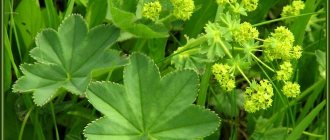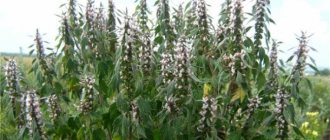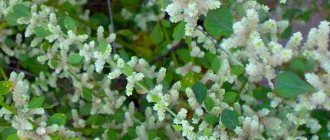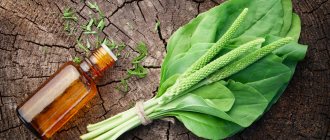Traditional medicine rarely deserves the attention of official medicine (a topic for a separate discussion - why?). Some of them are sometimes “lucky”, and among them is a distant relative of the poppy - the celandine plant. His merits are noted by the national title - “Russian ginseng”.
Infusions and decoctions of celandine are used to treat tumor diseases. Juice, extracts and decoctions of celandine have long been used to remove warts, freckles, acne, psoriasis plaques, fungi and papillomas. It is this ability that gives the grass its name. In different regions of Russia, the plant is also known as: chistolot, yellow milkweed, chistuha, warthog, etc.
Is celandine effective against cancer? Can it be an alternative to official treatment? At the end of the 19th century, Russian doctors tried to treat tumors with a plant extract, but the effect of celandine on carcinoma was weak and not effective enough.
What is celandine
Celandine is a perennial herbaceous plant belonging to the poppy family. Widely distributed in the temperate climate of Eurasia. Typically grows throughout Europe with the exception of northern Scandinavia and Iceland. This plant can also be seen in the Canary Islands, Madeira, Morocco, northern Algeria, New Zealand and North America. The southern border of the celandine's range passes through Turkey, Iran, Kazakhstan and southern China. And the easternmost point where this grass grows is called the Japanese islands. As a rule, it grows along roads, on the outskirts of damp forests, especially beech and hornbeam. Often found in gardens and parks. Celandine loves fertile soil enriched with humus. And around the 16th century in Europe, celandine was grown as an ornamental plant.
Content:
- What is celandine
- Chemical composition and beneficial properties
- Benefits for the body
- Use in folk medicine
- Use in cosmetology
- How to prepare correctly
- Daily norm and dosage
- Contraindications
- How else can you use it?
This is a small plant, it rarely grows higher than 75 cm. Its light green leaves are divided into 5-7 oval-shaped segments. The underside is slightly fuzzy. The first yellow flowers (up to 2 cm in diameter) appear on the bushes in the spring and do not disappear until the beginning of autumn. When the grass fades, narrow elongated “capsules” with black shiny seeds are visible on it. In places where the stem is damaged, orange-yellow juice oozes, which is both poison and medicine. It is because of this juice that the plant is popularly called yellow milkweed, yellow milkweed, and devil's milk. Although other names are also known, for example, swallow grass (appears at about the same time when swallows arrive, and the Latin name translates as “swallow”), warthog (removes warts), cape grass (grows near fences), nutcracker (ripe seed pods snap) or cleansing herb (cleanses the skin of lichen).
Interestingly, in ancient times, celandine was considered a magical plant. In Rus', for example, they believed that this herb accumulated the power of fire and protected from evil. It was customary to carry the leaves of this plant with you, wrapped in burlap, for good luck and to protect against unfair accusations.
Why is celandine dangerous?
Celandine is a poisonous plant. Like many of its relatives from the poppy family, celandine contains a whole range of alkaloids, similar in composition to opium. Their effects are varied and dangerous: they cause depression of the nervous system up to its paralysis, drug intoxication with subsequent convulsions, surges in blood pressure and disruption of the intestines. There are known cases of poisoning of livestock as a result of eating celandine - they are rare, since animals normally avoid this plant because of its unpleasant taste. For humans, fatal poisoning is unlikely, but the harm to health can be significant. The highest content of alkaloids in celandine grass is observed during flowering; in the roots the content of poisons is consistently high throughout the season.
Celandine plant materials are harvested just during flowering
Chemical composition and beneficial properties
Celandine juice contains a large number of alkaloids (almost 20 types). Their concentration in leaves and stems ranges from 0.5 to 1.5%, but the maximum amount of these substances is in the roots (up to 3-4%). In addition, celandine juice is rich in carotenes, ascorbic acid, essential oils, organic acids, tannins, phenolic compounds, flavonoids, choline, lectins, glycogen, pectin, various enzymes and other useful chemical compounds.
Most of the medicinal properties of celandine are determined by the alkaloids contained in the plant. One of the most powerful effects of celandine is relaxation of smooth muscles. That is, the plant extract affects the gastrointestinal tract, gall bladder, ureter, uterus, promoting the outflow of bile and active excretion of urine, eliminating constipation and menstrual pain.
Chelerythrine and sanguinarine contained in the stems have antiviral and bactericidal activity (including useful for getting rid of staphylococci and streptococci). And chelidonine acts on the nervous system like morphine, but does not cause euphoria (only anesthetizes).
The juice also contains a substance that blocks the proliferation of the papilloma virus and prevents the growth of warts.
In addition, the alkaloids contained in the plant are useful for protecting against viruses, have antitumor activity, antimicrobial, analgesic, sedative, diuretic, and anti-inflammatory properties.
Using celandine for warts
Celandine ointment, intended for the treatment of warts, is the most popular form of medicine containing this plant. It works in the same way as fresh juice or herbal extract to quickly remove skin lesions.
Warts are skin lesions caused by the human papillomavirus (HPV). It is susceptible to the action of celandine alkaloids, so even a few days of regular lubrication with the juice is enough to significantly reduce or even completely eliminate warts.
The active compounds in celandine also have an anti-inflammatory effect, they strongly suppress the excessive growth of keratinocytes responsible for epidermal keratosis. Celandine also has fungicidal and antibacterial properties, including against gram-positive bacteria such as Staphylococcus aureus and Mycobacterium smegmatis.
Ointment with celandine has a slightly yellowish color, a greasy consistency and an intense earthy aroma. It is oily, so it nourishes and protects the skin well. It is also an antiallergic agent. Animal studies have confirmed that preparations containing the herb celandine can reduce the effects of histamine and even relieve anaphylactic shock.
Benefits for the body
Today, celandine is used mainly to treat the liver, spleen, gall bladder, kidneys, intestines, and some lung diseases. In addition, homeopathic preparations based on this herb are prescribed to people for gallstone disease and hepatitis. Next we’ll talk about the most famous and best studied properties of the plant.
Protection for the liver and gallbladder
Celandine contains substances that help cleanse the liver. This plant is useful for detoxifying the body. It has natural protective properties that not only help maintain proper liver health and performance, but also protect cells from damage. Celandine extract reduces inflammatory processes in the organ, it is useful for treating fibrosis and preventing toxic hepatitis. Celandine stimulates the functioning of the gallbladder, the dysfunction of which is known to cause various diseases, including indigestion. Clinical studies have confirmed the effectiveness of the herb for treating gallbladder inflammation. But before starting herbal medicine, it is important to consult a doctor.
Improves digestion
Celandine is useful to take for disorders of the digestive system. This herb relieves abdominal cramps, bloating, and alleviates indigestion. It helps the body produce more bile and other digestive enzymes responsible for efficiently digesting food. Some studies indicate that celandine extract is useful for treating stomach ulcers, irritable bowel syndrome and some chronic gastrointestinal diseases.
Treats eczema
The juice of the plant is traditionally used to treat many skin diseases, including atopic dermatitis. In 2011, scientists conducted an experiment, the result of which indicated that celandine juice is useful for treating eczema. This experiment was conducted on rats, but still proved the plant's ability to reduce the symptoms of eczema, including inflammation and itching.
Tinctures of celandine have been used for centuries to treat many skin conditions, including ringworm, calluses and warts.
Antimicrobial agent
Celandine is effective against diseases of the gums and teeth caused by bacteria. Laboratory experiments have shown that the plant extract has powerful antibacterial activity against several strains of bacteria, including streptococci. Researchers suggest that the antimicrobial abilities of celandine are associated with the substance chelerythrine contained in the plant. Other studies have confirmed the herb's effectiveness against the herpes simplex virus.
Anticancer agent
Celandine has anti-cancer properties. At one time, a study was conducted with the participation of patients with different types of cancer. Each participant in the experiment received a certain portion of celandine extract. It turned out that under the influence of the herbal medicine, the proliferation of cancer cells slows down and the survival rate of patients with cancer increases. Although, to be fair, it is worth noting that not all researchers agree that celandine is really so effective for treating cancer. At one time, the drug “Ukrain” for the treatment of cancer was made from celandine extract. But later, many researchers doubted its effectiveness, and in many countries this medicine was completely banned due to its dangers. But on the other hand, no one can deny that celandine contains substances that have antioxidant activity, which is also a protective factor against cancer.
Removes warts
Modern science has confirmed that celandine juice is an effective medicine against warts and papillomas. But these plant abilities have been known to man for more than a century. In ancient times, people knew that if you regularly apply orange celandine juice to a wart, sooner or later it will disappear. Today, many scientists confirm the effectiveness of such a folk remedy, but at the same time remind: you should not apply the herb juice to healthy areas of the skin (burns are possible).
For this treatment, you should break a branch of a fresh plant and wait until a drop of juice appears, then apply it to the wart. If it is not possible to obtain fresh celandine juice every day, you can prepare medicinal vinegar. To do this, pour 10 g of fresh plant with a glass of vinegar and leave for a month in a glass container (keep in a dark place, shake the jar with the contents every 3 days). The resulting product is useful for moistening warts.
Other benefits of celandine
- antifungal agent;
- relieves spasms;
- treats arthritis and gout;
- treats diseases of the genitourinary system;
- has analgesic properties;
- reduces blood pressure;
- useful for tuberculosis.
Anticancer activity of celandine
Celandine does not work against cancer, because this plant does not have an antitumor effect (the cell poison included in its composition, chelidonin, is not an effective anticancer cytostatic, which has long been clinically proven by oncologists in different countries).
But: this plant can be used for symptomatic therapy, as an addition to the main course of treatment of a malignant tumor. Against the background of tumor growth, there is almost always inflammation at the site of the tumor, caused by the partial destruction of cancer cells and the addition of infection. Celandine can help:
- Remove swelling in the tissues around the carcinoma;
- Reduce inflammatory manifestations of the disease;
- Suppress the growth of fungi and bacteria;
- Reduce the severity of viral damage;
- Improve the healing of tumor-damaged tissue.
- Reduce the severity of pain.
Everything that helps in the fight against cancer can and should be used. Celandine is powerless against cancer, but the properties of the poisonous plant can be used for concomitant and symptomatic therapy. Moreover, against the background of the use of this folk remedy, immune protection against carcinoma will increase. Auxiliary treatment can enhance the effect of the main drugs and slightly mitigate the side effects of chemotherapy and radiation therapy.
Use in folk medicine
Best materials of the month
- Coronaviruses: SARS-CoV-2 (COVID-19)
- Antibiotics for the prevention and treatment of COVID-19: how effective are they?
- The most common "office" diseases
- Does vodka kill coronavirus?
- How to stay alive on our roads?
In European and Chinese folk medicine, celandine has been used for many centuries. Soon after the plant was brought to North America, the Indians also began to use it as a medicine. In Ancient Greece and Rome, swallow grass was used to get rid of intestinal parasites and reduce body temperature, and in medieval Europe, the juice of the plant was used to treat jaundice and other liver diseases. By the end of the 19th century, when researchers learned much more about the chemical composition of the plant, its scope of application expanded significantly. And already in the twentieth century, different countries began cultivating this herb.
In Russia and the Baltic countries, celandine is known primarily as a herbal medicine for cleansing the body. In Latin American countries, this plant has been used since ancient times to treat the liver, stomach disorders, gallbladder diseases, hepatitis and skin diseases. In Asia, this herb is famous as an anti-inflammatory agent. Medicines from this plant were used to treat bronchitis, whooping cough, and also to remove toxins. At different times in European countries, celandine was used to cleanse the blood, treat jaundice, and remove stones from the liver and gall bladder. In the old days, toothache was also treated with celandine (the leaves were applied to the sore tooth), and powder from the dried plant was poured onto wounds to speed up their healing.
Young shoots are used in herbal medicine in the form of decoctions, aqueous or alcoholic extracts. Celandine in this form is especially useful for the kidneys, liver, bile ducts, treatment of rheumatism, intestinal colic, abdominal pain, migraines, swelling. Infusions and tinctures of celandine are antispasmodic, diuretic, choleretic, analgesic, sedative, antiallergic, antiviral, antifungal agent.
The juice of the plant today is used only externally (to remove warts, condylomas, papillomas, corns, calluses, fungi, psoriasis, to cauterize herpes and polyps). An alcoholic tincture of the herb is used in folk medicine to strengthen the immune system and prevent cancer.
Some conclusions
- Celandine is a useful addition to a cancer patient’s medicine cabinet, but only as a supplement and not as part of the main course of treatment.
- Celandine is a poisonous plant. You need to remember this not only when taking medications, but also when preparing your own preparations.
- External and local use of celandine will most likely not cause harm to a cancer patient, with the exception of possible allergies and burns. In some cases the application may be useful.
- The effect of taking celandine orally on the advice of “traditional healers” is unpredictable.
- It is safer to use pharmaceutical preparations of celandine.
Last thing:
Self-medication for cancer is literally “life-threatening.” Celandine can be used against cancer, but as a supplement to the main therapy of carcinoma, with strict adherence to the dose, under the supervision and recommendation of an oncologist.
Popular hit:
- Turning to alternative medicine
Use in cosmetology
Our grandmothers, it seems, knew how to make a beauty product from every herb. Celandine was also included in the list of herbs beneficial for hair and face. Women regularly rinsed their hair with a decoction of this plant to give it a beautiful shine, stimulate growth, and also to get rid of dandruff. It is also useful to wipe the facial skin with the same decoction, especially problematic skin (with acne, pustules, inflamed areas).
Mask for problem skin
Mix a teaspoon of peach or olive oil, one yolk, a little oatmeal and 10 drops of celandine juice. Keep on face for 5 minutes. Use no more than once a week. This product is useful for lightening age spots and treating acne.
Mask for oily skin
Prepare a mixture of 2 teaspoons of sour cream, 1 teaspoon of green clay and the same amount of celandine juice. Apply to cleansed facial skin and leave for 15 minutes. This mask is useful for regulating the sebaceous glands, preventing and treating acne.
Celandine plant. Description, features and types of celandine
Description and features of celandine
Celandine is a herbaceous plant with healing powers. An unpretentious herbaceous plant that grows almost everywhere is celandine . It can be seen on the edges of forests and rocky slopes.
This annoying grass is even considered by many owners of summer cottages to be harmful weeds. At the end of spring and in the summer months, such a representative of the flora, growing extremely quickly, arbitrarily fills the spaces along the fences of private houses and garden plots, bringing a lot of trouble to their owners.
But you shouldn’t rush with irritation to pull out, burn and throw away such a weed, because celandine grass has many valuable qualities. It is this plant that is quite capable of becoming a powerful weapon to combat hated pests of vegetable gardens and orchards, in addition, it can also bring enough benefits for those who are able to study its properties and skillfully use them.
This representative of the planet’s flora is classified by biologists as belonging to the poppy family, reaches half a meter in growth, and in some cases even a meter in length, and is a perennial plant.
As can be seen in the photo of celandine , it has a branched straight stem, which, when broken, releases a thick liquid - milky juice, which in air instantly transforms into a substance that has an orange-yellow hue, while having a bitter taste.
From the stem of celandine, large leaves emerge, green on top and bluish below, consisting of round or oval paired lobes in an amount of three to five. The upper lobe is three-lobed and larger than all the others. And the light brown taproot of the plant goes down underground.
In the photo there are celandine flowers
Celandine does not have nectaries - special glands that form sugar juice, but insects are attracted to a similar flora object that has a huge amount of pollen.
Sometimes all the warm months of the year can bloom for celandine, starting from sunny May and ending with August, close to autumn, famous for its cool nights. And it is at this time that at the ends of the plant’s stem one can observe golden-yellow celandine flowers, built from four small centimeter-long petals.
It should be warned: all parts of celandine, not only flowers, but also stems with roots, contain alkaloids and other toxic substances, which makes the plant poisonous.
However, at the same time, all its components, including seeds in which fatty oils are found, are also considered valuable raw materials. And the plant itself is rightfully classified by scientists as medicinal. The reason is that celandine is built from elements that are commonly called biologically active.
It contains vitamins, succinic, malic and citric organic acids, tannins, essential and resinous oils, and much more. But you just need to use such wealth correctly for the benefit of people and their health, finding a reasonable use for celandine .
After all, even the toxic properties of the plant have their positive sides, having the valuable ability to kill harmful microbes; various bacteria and small parasitic organisms that cause damage to living beings and cause many diseases.
Planting and propagation of celandine
The fruits of celandine have the form of a pod in which shiny small black seeds ripen, having two cotyledons, which gave the name to the genus of the plant: dicotyledons.
They are attractive to nimble, hardworking ants, who, spending their lives in everyday chores, carry seeds over long distances, unwittingly contributing to the plant’s ability to spread to new territories.
The photo shows pods with celandine seeds
Summer residents and gardeners not only fight celandine as a malicious weed. Many of them understand that the plant can repel dangerous pests, so they deliberately plant it in gardens and vegetable gardens. And the poisonous capabilities of celandine are used to combat enemies of cultivated plantings, destroy copperheads, scale insects and aphids.
When breeding celandine, you need to take into account that such grass reproduces in two ways: by cuttings of rhizomes and by seeds. The latter can be used fresh.
In this case, they are planted in June or July, choosing any suitable place, maintaining a half-meter gap between the rows and sprinkling with a thin layer of earth. But dried seeds two years old are also quite suitable. They can be planted before winter or in spring in shady areas with high soil moisture.
The photo shows the medicinal juice of celandine, which is released when the stem is broken.
Caring for celandine
This plant, unpretentious to external conditions, usually does not require special care. Only for the first time after the appearance of the first shoots, it is better to ensure that in the initial period, when the shoots of celandine are just coming into force, it is not drowned out by other, more overgrown plants.
It is necessary to weed the area, water it during the dry period and loosen the soil until the celandine turns into a fully viable plant.
Mineral fertilizing at the initial stage will not harm at all. However, you can do without them, because this grass is perfectly capable of developing and growing on its own in nature.
The plant begins to bloom only a couple of years after planting, but a dense cover of its shoots is formed much earlier, since the reproduction of celandine occurs, including the renewal of buds, which are formed annually on its roots in an amount of up to three pieces.
Types of celandine
Among the varieties of this plant, which takes its place in the genus of dicotyledons, only two species stand out. The main one is called greater celandine . The grass spreads over a vast area of Europe, also growing in Russia.
The only exceptions are areas under the yoke of snow in the Far North. Thickets of the described representative of the flora are a common occurrence in the Mediterranean. The plant was also brought to the north of the American continent.
It is not for nothing that popular rumor dubbed the great celandine a warthog, which noted the excellent properties of its beneficial juice, used by the ancestors of modern people for many centuries.
After all, it was with the help of miraculous potions created from this ingredient that they got rid of warts . Celandine was used to treat fungal diseases, purulent abscesses, burns, calluses and papillomas, and to eliminate age spots, pimples and skin growths.
The medicinal capabilities of celandine juice have been used by human civilization, as many sources testify, since the 4th century BC.
It is known that the famous scientist and philosopher of antiquity, Theophrastus, who also became famous in Greece as a healer, prescribed treatment with celandine .
Various components of the plant have the ability to perfectly cleanse the skin. And with this, celandine justifies and confirms its main name.
And folk healers of today, who use the properties of celandine to heal nervous disorders, treat old wounds and scabies, have dubbed the plant Russian ginseng for its ability to relieve various ailments, restoring people’s precious health.
A decoction of celandine has an analgesic and diuretic effect, relieves colitis and normalizes stomach function when used correctly. Homeopaths make celandine tinctures , also prescribing internal administration of the remedy, despite its toxicity, but in strictly calculated doses.
Another variety of miraculous herb, widely known as a medicinal and ornamental plant, first described by the Japanese Hiroshi Hara as only a subspecies of greater celandine, grows in East Asia, and therefore received the name: Asian celandine.
Medicinal properties of celandine and its contraindications
Modern medicine highly values the properties of celandine. And based on it, medications are produced to treat infections, ailments of various body organs: liver, kidneys and gall bladder, strengthen the nervous and immune systems, relieve fever and inflammation of the gums.
In addition, the components of this plant are actively used for the production of cosmetics: balms, ointments, gels for the care of delicate skin of the face and other parts of the body.
Mountain Celandine is made from the juice of the plant and extracts from other medicinal herbs for the treatment of skin diseases. According to some data, the drug can even affect cancer formations.
The invention of pharmacist Bolotov is kvass made from celandine. This biological product, using the healing power of the plant, also eliminates the negative effects of the alkaloids it contains.
The essence of the principle is that during the process of fermentation and the action of whey enzymes, the toxic substances filling the structure of the plant lose their potency. Bolotov celandine turns out to be very useful for treating diseases of the ears and nasopharynx, stomach and intestines, regenerating their membranes.
Of course, decoctions and tinctures from this plant have invaluable medicinal qualities, but it should be remembered that the preparation of their ingredients must be done according to all the rules.
Indeed, if the components of celandine are used incorrectly, extremely severe poisoning is possible. Its symptoms may include: slow pulse, decreased blood pressure, depressed nervous state, even convulsions and nausea.
If warning signs appear, you should immediately perform gastric lavage. And in severe cases, it is better to take the victim to the hospital.
As evidenced by reviews of celandine , this herb contains enormous healing power, but self-medication should be done with great caution, having first consulted with a specialist.
Typically, the collection of ingredients occurs during the flowering period. The juice is obtained from a freshly harvested plant. But the grass itself, its flowers, seeds, roots and leaves are dried to be used later.
Remembering that the plant is poisonous, you should take precautions: do not rub your eyes and face with your hands during the collection process, and when finished, wash your hands thoroughly with good soap.
Drying is done by spreading the grass in a thin layer and constantly stirring it. This can be done under a canopy with good ventilation or using a dryer. The resulting raw materials are stored for a period not exceeding three years.
But it is best to buy celandine at a pharmacy, where it is freely sold. This will save you hassle and problems, guaranteeing excellent quality of the purchased product. Moreover, the price of celandine is usually low.
How to prepare correctly
The above-ground part of the plant and its root are used for medicinal purposes. Greens are harvested in May-June; besides, it is better to collect only young shoots. It is advisable to dry the leaves and stems at a temperature of 30-60° C separately from other plants. The roots are dug up in autumn or early spring and dried at a temperature not exceeding 60° C. Store dried raw materials in hermetically sealed packaging, protecting them from moisture. From 6 kg of fresh leaves and roots you will get approximately 1 kg of dry raw materials.
Celandine against pests
Celandine knows no limits: in a summer cottage it spreads very quickly and occupies impressive territories. If you are familiar with a similar situation, and you are just thinking about what you should do with this celandine, do not rush to “execute” it; it can serve you well in the garden.
- When planting bulbous crops. Poor and contaminated soil is not suitable for growing bulbous crops. But with the help of celandine, she can quickly be brought back to her senses. Just sow this perennial in the spring, and closer to mid-autumn, plant the plant in the ground. By spring, the garden bed will be completely ready for planting bulbs.
- For pest control. For this purpose, you will need a freshly prepared infusion based on jaundice. It’s easier to make it than steamed turnips: we pull out three or four celandine bushes, chop it into small pieces with a knife, put it in a bucket and fill it to the top with boiling water. After ⅙ hour, the liquid in the bucket will turn brown, and you can begin healing watering. In just one time you will get rid of annoying aphids. And other insect pests in this situation will not stay with you for long.
- To increase the immunity of gladioli. If you grow gladioli, then you probably know that these flowers often get sick, thereby losing their aesthetic properties. Watering with celandine tincture will increase the immunity of flowering plants and protect them from diseases and pests. To do this, place half a kilo of dry perennial in a bucket, pour boiling water over it and leave for a couple of hours until it cools completely. And then the prepared product is used for watering. Water gladioli with celandine tincture, adhering to the following schedule:
- first watering - after the formation of two leaves;
- the second - after the appearance of the sixth leaf;
- the third - before the buds open;
- the fourth - at the very end of the growing season.
- For rodent control. To prevent those who like to gnaw the roots of garden crops from invading your garden plot, you need to scatter dried perennials under garden trees and in beds with bulbous plants. This helps a lot in scaring away uninvited guests.
Join our Facebook group
Daily norm and dosage
Researchers say that you should not consume more than 12-30 mg of alkaloids per day, that is, no more than 2-5 g of dry celandine herb.
A safe decoction of celandine is prepared from half a tablespoon of the herb and a glass of hot water (the mixture is steamed for 30 minutes). Take this infusion no more than three times a day and no more than 2 tablespoons (can be diluted in a glass of water).
When using celandine juice externally, it is important that it does not get into the eyes, as it causes a strong burning sensation and can damage the mucous membrane.
Celandine treatment of liver diseases, heart diseases, seizures, depression and cancer
Celandine is also sometimes used internally. Preparations based on its herb or root are used in the treatment of diseases of the digestive system, especially the bile ducts and intestines. They have an antispasmodic effect similar to papaverine, although weaker. The plant has a protective effect on liver cells, as well as an antiallergic, diuretic and analgesic effect.
Celandine is a potent choleretic agent that does not increase the level of bile acid and prevents stone formation. It helps soothe biliary and intestinal colic by regulating the secretion of gastric juice and protecting the mucous membranes of the digestive system. The relaxant properties of the plant also help relieve the symptoms of dysmenorrhea.
Celandine has also been proven to lower blood pressure and prevent recurrence of ischemic episodes. It also has antiarrhythmic effects and improves the blood lipid profile. In addition, it has a calming effect and helps you fall asleep, so infusions are recommended to drink when irritated and nervous. By supporting liver function, celandine helps remove toxins from the body and supports the immune system.
Celandine has positive effects on the nervous system, exhibiting antidepressant, anxiolytic and nerve cell protective properties, and the compounds it contains have promising potential effects in the treatment of Alzheimer's disease and epilepsy.
Some scientists claim that preparations from the herb celandine can be used to treat cancer with very good results. In Ukraine, an anti-cancer drug based on the alkaloid derivative chelidonine was developed. This drug is registered with the US National Cancer Institute. When combined with gemcitabine, it has proven to be an effective treatment for pancreatic cancer.
Medical studies have proven that chelidonine is effective in preventing recurrent neoplastic diseases even after previous surgery. The drug has a positive effect on the human immune system, which allows it to be used in the treatment of acquired immunodeficiency syndrome and hepatitis C.
The antitumor properties of celandine were confirmed by studies conducted on tumor tissue of mouse lymphoma, as well as on tissues of esophageal sarcoma and other neoplasms.
Contraindications
Celandine and preparations containing herbal extract should not be taken during pregnancy as they stimulate uterine contractions. The plant is prohibited for stomach ulcers, acute catarrh of the gastrointestinal tract, asthma, epilepsy, and patients with angina pectoris. It is important to know that celandine contains compounds that cause drowsiness.
Overdoses of celandine provoke dyspepsia, nausea, constipation, lethargy, dryness and burning in the mouth, headaches, dizziness, disturbances of consciousness, convulsions, and sometimes even paralysis. Although this herb is used to treat the liver, an overdose can, on the contrary, damage the organ. You should not use celandine for longer than 2 months.
Dosage, contraindications and side effects
Celandine is considered a plant for which the risks associated with its use outweigh the benefits of its medicinal properties, despite a centuries-old tradition of its use in folk medicine. Care must also be taken when collecting raw materials, since getting juice from the stem into the eyes leads to serious illnesses. An even greater danger is the careless ingestion of celandine.
So if you use celandine, then only with great caution. It should not be forgotten that celandine is a poisonous plant and that if taken in too high doses, irreversible liver damage can occur.
After a month of treatment, it is recommended to monitor the activity of liver enzymes. And to avoid side effects, it is better not to use the herb for more than 2 months.
According to the European Scientific Cooperative for Herbal Medicine (ESCOP), celandine is effective in treating symptoms of indigestion, gastrointestinal spasms, bladder and bile disorders.
According to ESCOP, average dosage of celandine
- 1-2-3.6 g of herb;
- 125-700 mg of aqueous-alcoholic extract with a standard dose of alkaloids of 9-24 mg in the form of chelidonine;
- 2-4 ml of tincture (1:10) 3 times a day;
- 1-2 ml liquid extract (1:1) 3 times a day.
General contraindications to celandine therapy include:
- autoimmune diseases;
- obstruction of the bile ducts;
- liver diseases;
- stomach or duodenal ulcer;
- use of medications that impair liver function;
- glaucoma;
- age up to 12 years;
- pregnancy and breastfeeding.
Side effects of celandine, which some people may experience even after consuming small amounts of the plant and that occur with long-term use, include indigestion, nausea and diarrhea.
The consequences of consuming too much celandine herb may include:
- abdominal pain;
- spasms of the digestive tract;
- urinary incontinence;
- salivation;
- lethargy;
- pain and burning in the mouth;
- nausea;
- diarrhea.
Severe celandine poisoning causes symptoms such as:
- headaches and dizziness;
- drowsiness;
- drop in blood pressure;
- cardiac tachycardia;
- loss of consciousness;
- coma.
It is worth noting that such serious side effects most often occur as a result of inadequate self-medication, especially taking excessive doses, too long use and combination with other herbs and especially with medications. It is better to coordinate planned treatment with a herbal medicine specialist, as well as with your attending physician, especially in the case of chronic diseases and constant use of medications.
Share this page with your friends!

